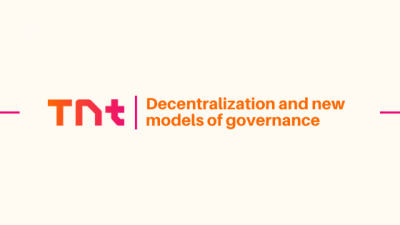Are you an aspiring entrepreneur looking to create a web application? Are you looking for a custom web applications development company to team up with? Or are you still researching possible options, wondering if web app development is right for you? Well you’ve landed in the right place, because we have the answers.
Web app development can be a complex and daunting task, but it doesn’t have to be. In this article, we will answer some of the most frequently asked questions about custom web app development. This article will provide you with a solid foundation for understanding web app development and the essential components that go into building a successful web app in 2023.

What Even is a Web Application?
A web application, commonly known as a web app, is simply a computer program that uses the internet to perform a specific function. In other words, instead of running on the computer, web applications use a separate server. Web apps usually consist of a server-side (called the back-end), and a client-side (called the front-end). On the front-end, the user enters data, and on the back-end, the data gets processed and, if needed, stored. Typical examples of web applications include online shopping carts, file conversion, photo and video editing, email programs like Gmail or Yahoo! Mail etc.
Web apps exploded in popularity in the 2010s and have kept growing ever since. It’s no wonder — they can be incredibly useful in to facilitate communication, provide access to information, support sales and marketing, and offer a wide range of services. Web applications may also be used to automate business processes, streamline workflows, and increase employee productivity. Web apps can provide users with a personalized experience, akin to that of a native mobile app — all from the convenience of a web browser of your choosing. No wonder tons of e-commerce, banking, streaming and education companies use web apps.
So How Does a Web App Work?
Web Applications are accessed through a web browser and don’t need to be downloaded. Users can access them through any web-browser of their choice — be it Chrome, Firefox, Safari or any other. They are designed to work across multiple platforms and devices, and are typically written in HTML, CSS, and JavaScript. Web apps can be used to access data, personalize user experiences, and even store information.
All Web Apps are made up of three major elements: the web server, the application server, and the database. The web server handles requests from the client, the application server processes data and executes the task, and the database stores information.
Here’s the basic rundown of a web application workflow:
- The user creates a request to the web server through the app’s user interface
- The web server sends this request over to the web application server
- The web application server executes the task and generates the results.
- It then sends these results back to the web server.
- The web server displays the requested information to the satisfied user.
Generally, web apps are coded using a wide array of coding languages and frameworks. For the client-side (front-end), the most common are JavaScript, HTML5 and CSS, whereas the server-side (back-end) is often coded using PHP, Java, Flutter and others.
If you’re interested in learning more about our process for creating web-based products, check out our page on web development.
What are web app development trends for 2023?
If you are interested in hiring a custom web applications development company, but are not sure what direction to take your app in, here are 5 trends that we believe to be the key areas that are likely to shape the development of web apps in 2023 include:
- Progressive Web Apps (PWA): Progressive web apps are web applications that can be accessed via a browser, but offer the functionality and user experience of a native app. They provide faster loading, offline access, and push notifications, and are becoming increasingly popular among developers and users alike.
- Artificial Intelligence (AI): AI is already being used to enhance Web Apps. Machine learning algorithms can be used to analyze user behavior and offer personalized experiences, while natural language processing can be used to make web apps more conversational and interactive.
- Chatbots and voice assistants: Chatbots and voice assistants are already being used in web apps, and this trend is likely to grow in 2023. Chatbots can offer 24/7 customer service and support, while voice assistants can make web apps more accessible and user-friendly.
- Blockchain: Blockchain technology has the potential to revolutionize web app development by providing a secure and transparent way to store and share data.
- Augmented and virtual reality (AR/VR): AR and VR technologies are already being used to create immersive web experiences. Incorporating AR/VR technology can offer users a more engaging and interactive experience.
Custom web app development in 2023 is likely to be driven by the need to create more personalized, interactive, and secure web experiences for users. Developers will need to keep up with the latest technologies and trends to build web apps that meet the evolving needs and expectations of users.
What is the custom web app development process?
The custom web app development process can vary depending on the specific requirements of the project, but generally, it involves the following steps:
- Discovery and Planning: The first step is to understand the requirements and objectives for the web application. This involves gathering information about the target audience, features, functionality, and design preferences, and creating a project plan, including timelines, budget, and project milestones.
- Design: Based on the project plan, the design team will create wireframes and mockups to visualize the user interface and user experience. Once the client approves the design, the development team will move on to the next stage.
- Development: The development team will begin coding the web application using the chosen programming language, framework, and libraries.
- QA: The quality assurance team will test the web application for bugs and errors, as well as check its performance, security, and usability.
- Deployment: After the web application passes testing, it is deployed to a production environment. The deployment process involves configuring the server environment, uploading the web application files, and setting up the database and other required components.
- Support: Once the web application is deployed, the development team will provide ongoing maintenance and support to ensure it stays up-to-date and continues to meet the client’s needs.
The custom web app development process is iterative, meaning that the development team may need to go back to a previous phase to make adjustments or changes based on new information or feedback from the client.
Interested? Come work with us!
Are you looking to take your web app development project to the next level? Look no further! Perfsol has a team of highly skilled and experienced developers who can help bring your vision to life. Contact us today and let’s make your web app dreams a reality!
Information contained on this page is provided by an independent third-party content provider. Binary News Network and this Site make no warranties or representations in connection therewith. If you are affiliated with this page and would like it removed please contact [email protected]



Comments